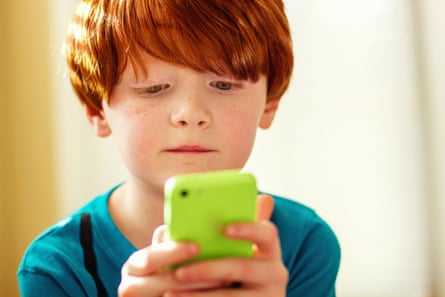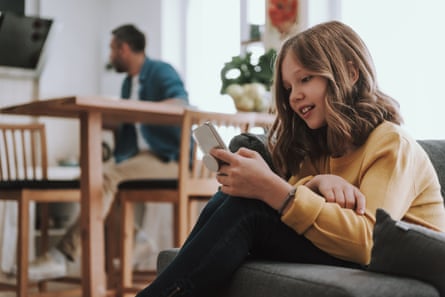Choose the right phone
From getting the right handset and trying to make sure children are safe online from scammers to ensuring they don’t lose it, there is a lot for parents to bear in mind when giving a child their first phone.
After you make the decision to get your child a mobile, first up is deciding what type of phone they should have and how much you are willing to spend.
For a first smartphone, budget Android devices start at less than £100 and often have solid batteries and good screens. The HMD Pulse is available online for about £70, while Motorola’s Moto G34 is £130.
Apple iPhones are a much more expensive option, with handsets from the official store starting at £599 for a new iPhone 16e. There are many more offers available online, with the 2022 iPhone SE (at Laptops Direct for £299) a good starting point.
Or you could opt to recycle one of your old phones by giving it a new battery and case, and factory-resetting the device. Assuming there are still software updates provided by the manufacturer, you could make a huge saving this way.
Set controls
If your child is under 13, Apple and Google allow you to create child accounts that are linked to your own account so you can manage their usage, such as filtering their search results. If they are older than 13 and have their own account, you can apply various parental controls on an Android phone or iPhone at setup by connecting it to your, or your family’s, account.
You can set screen-time limits, block apps, limit content, put limits on permissions and track their location. Apple’s parental controls and Google’s Family Link have guides to getting the settings right.
There are some parental controls on all networks, but for those seeking extra control, ParentShield is a mobile network which allows parents to record and review calls and texts, and has extensive number blocking and spending controls on premium numbers. Prices for sim-only deals are from £5.99 to £39.99 a month.

Teach privacy
In a world where so much is shared online, it is important to teach children when they are young how to limit what information they reveal. This will in turn limit their exposure to scams.
This is particularly important for children who are getting their first smartphone, or for those using their device in settings where parents or guardians do not have much scrutiny over what they are doing.
MoneyHelper, a service provided by the Money and Pensions Service, says that if children give away their personal details – such as name, birthday and address – criminals can open bank accounts in their name. This could affect their credit rating when they are older.
It advises parents to have a frank discussion with their child about not sharing personal details with anyone or when logging into a site or accessing a game.
You may be alerted to your child’s details being used by criminals if bank or credit card statements arrive in their name. You can report any ID theft to Action Fraud, the national reporting centre for cybercrime.
Show children how to make strong passwords and have them share them with you. The National Cyber Security Centre suggests using three random words together to make one long password.
Beware of in-app purchases
There appears to be no end of “free” games available to download, but they often carry with them fees for in-app purchases, such as buying virtual coins, paying for extra lives or getting a new “skin” for your character.
Parents have contacted the Guardian with horror stories of how their children ran up bills of thousands of pounds by making hundreds of in-app purchases through a linked payment card.
You can turn off in-app purchases through the settings.
Link with budgeting
Smartphones can be an important tool for children in learning how to spend and budget.
The pocket money app GoHenry has three different tiers of membership (from £3.99 a month per child) with a debit card and access to a platform where the child can set savings goals, while parents can dictate where the card is used and monitor spending. Its website has educational videos and quizzes around managing money.
Starling Bank has Kite, again a debit card and app, where kids can check their balance and their spending from their phone, while their parents can top up, monitor spending and set limits. A parent or guardian has to have a Starling current account, and set-up is free.
The HyperJar app comes with a prepaid card on to which money can be loaded, then allocated to different spending areas in a child’s life such as food, travel and clubs. A teen’s prepaid card costs £4.99.

Keep it safe
Phones go missing or are stolen all the time, but there are ways to keep track of an errant handset.
If your child has an Android phone, you can find the mobile’s location in the Family Link app once the device location is turned on. With iPhones, you can use the Family Sharing feature to find lost devices.
A phone case is a good idea to try to minimise damage when the mobile is inevitably dropped. Many cases made of silicone or rubber will give a basic level of protection as they are shock absorbent. Thicker cases may be better for teenagers, who can be more prone to dropping their device as they get used to carrying it around. You can spend a little or a lot on a case, but options from the well-known brand OtterBox start at about £20 on Amazon.
You can help prevent the screen from getting scratched or cracked with a strengthened-glass screen protector. Prices from Belkin start at just under £20 for smartphones.
Go dumb
Many parents will only want their child to have the most basic functions on their device, so they can call in an emergency or send an SMS to say when they will be home, for instance. Or you may want to give them a phone with limited features as a softer entry into mobile use.
If that is the case, then a “dumb” phone may be the answer, as these have more limited access to messaging apps – for example, you won’t be able to access WhatsApp.
Dumb phones tend to be much cheaper than smartphones, so you stand to lose a lot less if your child misplaces theirs or if it is stolen. For example, Nokia has the 110, 225 and 3210 models, priced between £40 and £75.
Dumb phones do still have access to the internet, so it is important that you are happy with the parental controls available. Navigating the internet is more cumbersome and fiddly than with a smartphone but is possible. There are also more limited controls in place for parents to lock down the camera, browser and messaging. It is worth checking the manufacturer’s documents to ensure a phone has the controls you want before buying.
Also, the limitations of dumb phones may frustrate some parents. For example, they may want to track their child’s movements or know where they are at any given time – features not generally available on typical dumb phones.

 3 months ago
64
3 months ago
64

















































